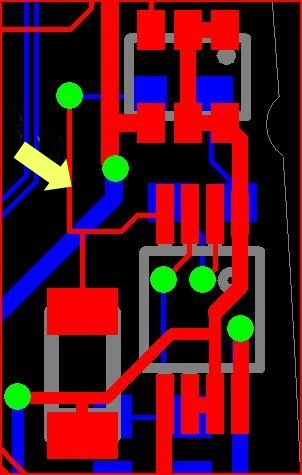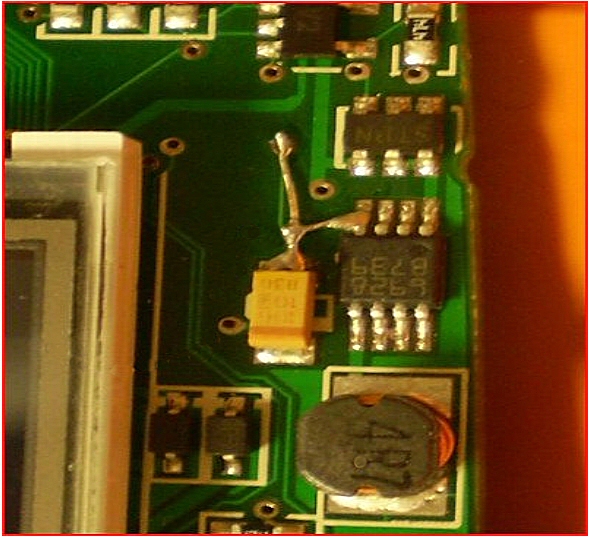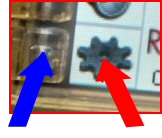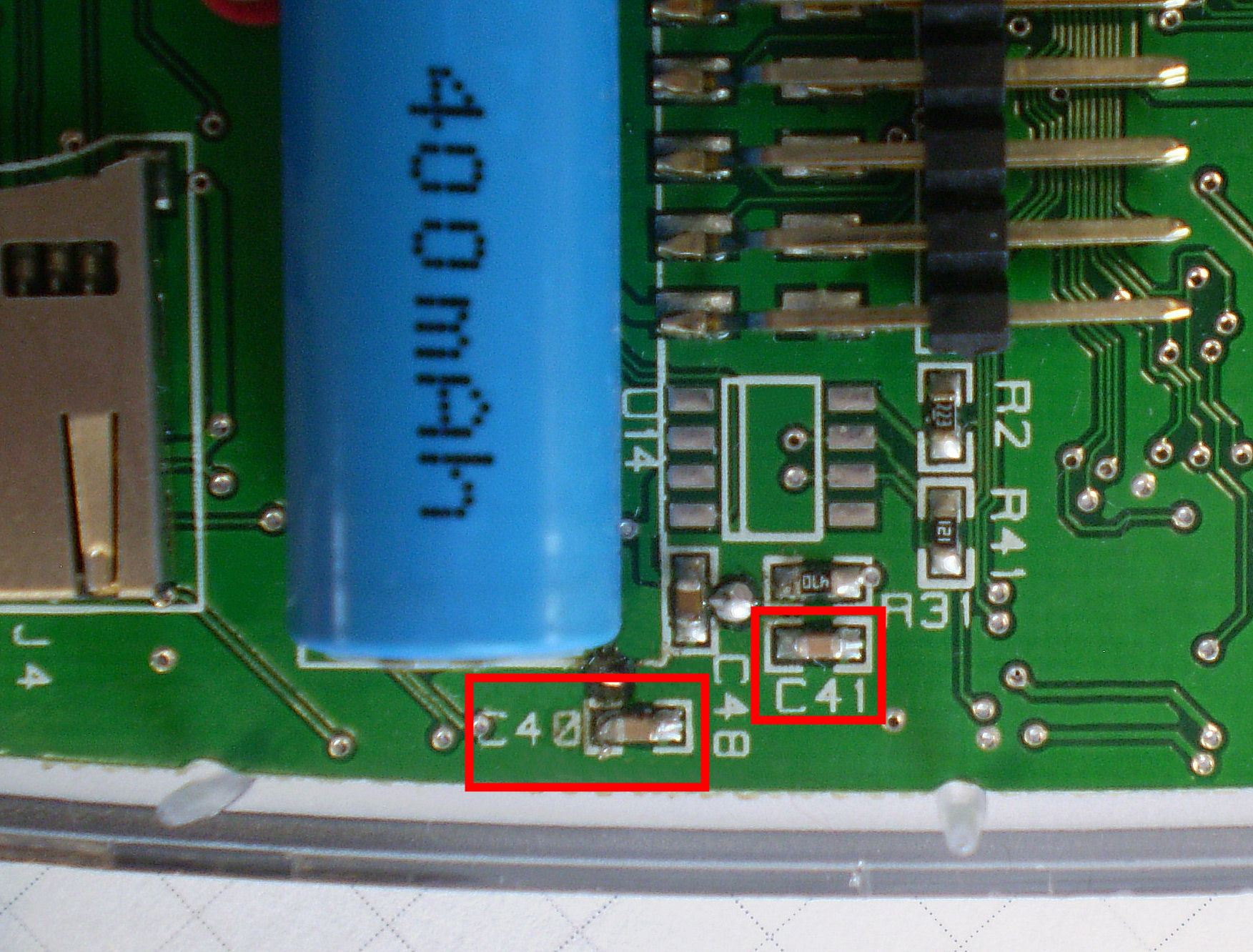|
|
|
|
Primer2: Workarounds to Known Problems
|
|
This section provides some workarounds to known known issues encountered with the STM32 Primer2. These are intended to be complete responses regarding the issues raised, however complementary information may be found in the site's user forums.
Hardware – firmware incompatibility
Description
|
If CircleOS (3.1 and earlier) version for Primer1 is loaded in Primer2, the Primer2 does not function (LCD is off, no response to controls).
This occurs, for example, if you load a Primer1 application from Ride, which then automatically reprograms the Primer with the CircleOS corresponding to the project.
|
Cause
|
When starting, the Primer1 firmware configures the IO pins in such way that it shuts down the power. When this is done on a Primer2, the Primer2 never starts up.
|
Workaround
|
Reload the factory firmware (Primer2_Circle_Factory.hex) while keeping the orange button pushed. When pushed, the button forces the input voltage to the regulators.
|
Recommendation
|
Download the new 'CD-image' from this web site. This problem is now fixed by software (CircleOS recognizes the hardware configuration as primer1 or primer2 when starting up).
|
^top
Weak Ground Track on U9 Regulator (Primer2 PCB version < 1.2)
Description
|
Primer2 dies. There is no power to the STM32. The issue is not software (as the previous one), but hardware related.
|
Cause
|

The U9 regulator has burned out because of an over voltage on its input that was caused by the parasitic inductance of the track that connects it to the ground.
Note :
|
Note
|
This issue has been fixed with new version of PCB. Please verify the PCB version written on the PCB silk, near the SDCard connector, on the back of the Primer, after opening the case. |
Workaround
|

(Preventive) Reinforce the ground by adding a wire (first between the via and the capacitor, secondly between the capacitor and the pin 4 of the regulator (U9, L6928D).
If the problem occurs, the U9 regulator must be replaced, too.
|
Recommendation
|
At the moment, we do not know what the risk is of burning out the regulator, if the board is not corrected. We have encountered this problem on about 2% of the units during the production. Most of the boards in the first batch were fixed at the factory, but the very first boards shipped by ST are not corrected. If you own a uncorrected Primer2, it is recommended to fix it at described above.
|
^top
U9 & U17 Voltage Regulator Failure Primer2 (S/N < dngWNYxxxxx6000)
Description
|
When a voltage regulator is totally depleted, the output voltage is much lower than normal (typically around 1V). This is too low to provide correct behavior. When U17 is burned out, the LCD backlight and the sound do not function. If U9 is dead, nothing works.
Sometimes, the regulators are partially altered. In this case, their efficiency decreases dramatically and their own consumption increases. Severe symptoms may appear: for example, the Primer2 or the backlight are automatically switched off every 3-4 seconds. In this case, the regulator becomes hot. When it reaches its maximum temperature, its internal thermal protection is triggered. In less sever cases, the regulators just consume more current and occasionally generate high frequency noise. In both cases, it is possible to measure an abnormal global current consumption. Taken at the battery jumper (without USB connection), typical consumption with sound off should be 40-50mA. If it exceeds 60-80mA, it means that a regulator is partially damaged.
|
Cause
|
Investigation by Raisonance and ST indicate that the problem is caused by overvoltages at the (common) input for the regulators. The absolute input voltage for these regulators is relatively low (6V), and overvoltages are destructive. This limit is not far from the voltage supplied by USB (5V), and peaks could be the cause of our problems.
A first recognized cause was the weak ground signal on U9 (see above). It has been fixed on most of the Primer2. But this only addresses U9, whereas both U17 and U9 are both affected. The choice of capacitors has also been reviewed by ST. ST recommends multi-layer ceramic capacitors (instead of the original tantalum devices) for both C56 and C23, with same values (10µF). It seems that these changes fix most of the problems. However, a remaining issue is electrostatic discharge (ESD): the regulators are sensitive to ESD that occur either when touching the board with fingers (while the power is ON), or sometimes when plugging in the USB connector.
|
Recommendation
|
Adding a wire to reinforce the ground on U9 has already been proposed as a partial solution for old PCB version. Another important measure is the replacement of the tantalum capacitors with ceramic ones. Finally, it is highly recommended not to to touch the PCB with fingers when the board is powered. For the second batch of Primer2, we have decided to add a protection transil (SM2T3V3A) at the input of the regulators, but it is too early to know if this will offer complete protection for the regulators.
|
Note
|
The above modifications have been made on the last manufactured Primer2 . This concerns all Primer 2 with a serial number < dngWNY200006000.
Take a look at the post http://www.stm32circle.com/forum/viewtopic.php?pid=2400#p2400 in order to know how to retrieve this information.
|
^top
Battery Charging
Description
|
The Primer2 battery (Li-Ion) is supervised by a smart IC that provides optimal management of battery recharging. However, some customers have reported dead batteries.
|
Workaround
|
- When you receive your Primer2, fully recharge the battery before using it in standalone mode. Since the USB voltage supplies current to both the regulators and the battery recharger, it is still possible to use your Primer while recharging it.
- It is very important to never completely empty a battery! CircleOS controls the battery level, and automatically switches off the power supply when a low voltage level is reached. In such a situation, it is recommended to proceed with a complete recharge. When not using CircleOS, the user's software must verify the battery level (Refer to CircleOS as an example), and must detect low voltage levels to avoid any risk of completely emptying the battery.
- Multiple connections of the USB cable are not recommended. Every time a USB cable is plugged in, the smart recharger IC starts a new recharching procedure. Multiple starts of the recharging procedure are not recommended. If you need to connect / disconnect the USB cable very frequently, it is recommended that you keep the battery jumper removed.
|
^top
LI-Ion Battery Explosion
Description
|
Direct recharging of the Primer2 LI-Ion battery can cause an explosion in certain cases where the charging procedure is not followed precisely.
|
Correct Method
|
It is well-known that the recharge of a Li-Ion battery could be dangerous (could make the battery explode) in certain circumstances when the charging procedure is not followed scrupulously.
For this reason, the Primer2 was designed with a dedicated charger device (L6924D from ST) that guarantees that the exact procedure will be followed.
Only charge the Primer2 battery via the USB to avoid such problems.
|
^top
Touch Screen Calibration (CircleOS version < 3.81)
Description
|
The touch screen is not well calibrated. When 'drawing' on the main page, marks in the display may be shifted by almost 7-8 mm from the location where the glass is touched.
|
Cause
|
 During calibration, push on the plastic buttons. Do not push on the glass (red arrow) but on the plastic (blue arrow). There is a small pin under the plastic button, which is the reference point for calibration. During calibration, push on the plastic buttons. Do not push on the glass (red arrow) but on the plastic (blue arrow). There is a small pin under the plastic button, which is the reference point for calibration.
YES NO
|
Workaround
|
Once calibrated, it is always possible to relaunch a calibration stage from the 'config menu'.
|
^top
User Inputs
Description
|
Primer2-CircleOS now offers 3 possible inputs to navigate through the menus: Touchscreen, Joystick, MEMS-based controls (physically tilting the Primer).
|
Cause
|
The original OS (3.1, loaded at factory) does not manage the touchscreen input for menus. The version 3.3 extends the handling of the touchscreen to allow the user to scroll and select in the menus.
|
Workaround
|
Reload the factory firmware (Primer2_Circle_Factory.hex) while keeping the orange button pushed. When pushed, the button forces the input voltage to the regulators
|
Recommendation
|
In the menu 'Config > Interface > User Input' you can select one (or both) input among the accelerometer (MEMS) and the joystick.
-
When the MEMS is selected, you can tilt your Primer2 to navigate. A 'double-click' launches the selected action.
-
When the Joystick is selected, the 'up-down' directions allow to change the selection. Pushing the button on its cental position launches the selected action.
-
When both are selected, the priority is given to the joystick.
From CircleOS 3.3, the touchscreen is also used as a possible input. Touching a line in a menu selects this line. If you keep your stylus/finger (or fingernail) for more than two seconds on the selected line, the action will be launched.
In the list of applications (when the number of applications is greater than 6), you can also use the touchscreen to scroll through the list (iPhone like). Again, keeping the finger on the application to select without moving for more than 2 seconds will launch this application.
|
^top
Oscillator Malfunction STM32 Primer2 (Serial Nos. > dngWNYxxxxx6000)
Description
|
When powered by the battery or the "STM32" USB port, users may note the following symptoms:
- Execution of applications seems too rapid (Flashing of touchscreen calibration icon, menu cursor, ...)
- Primer freezes up when CPU frequency is set to maximum, or during the test procedure
|
Cause
|
Because of a component error that occurred on some Primer2 during manufacturing, during the power up sequence, the crystal that generates the CPU clock starts and oscillates at a frequency of 36 MHz instead of the nominal 12 MHz.
IMPORTANT NOTE: The Primer functions normally when launched with a USB cable connected to the "debug" USB port.
|
Workarounds
|
- Software workaround:

Install the CircleOS version 3.82 or later. The frequency of the crystal is checked during power up and the frequency of the CPU is adapted by software. This will keep the tool from freezing up during use. However, the audio circuit will not function for voice quality audio. Audio will still function as a buzzer.
Change the C40 and C41 capacitors with 10 pF capacitors. The photo shows the capacitors to change.
- Contact your distributor for information about exchanging products
|
Recommendation
|
Replace the C40 and C41 capacitors with 10 pF capacitors. The photo shows the capacitors to change.
|
^top
|
|
|
|
|

















